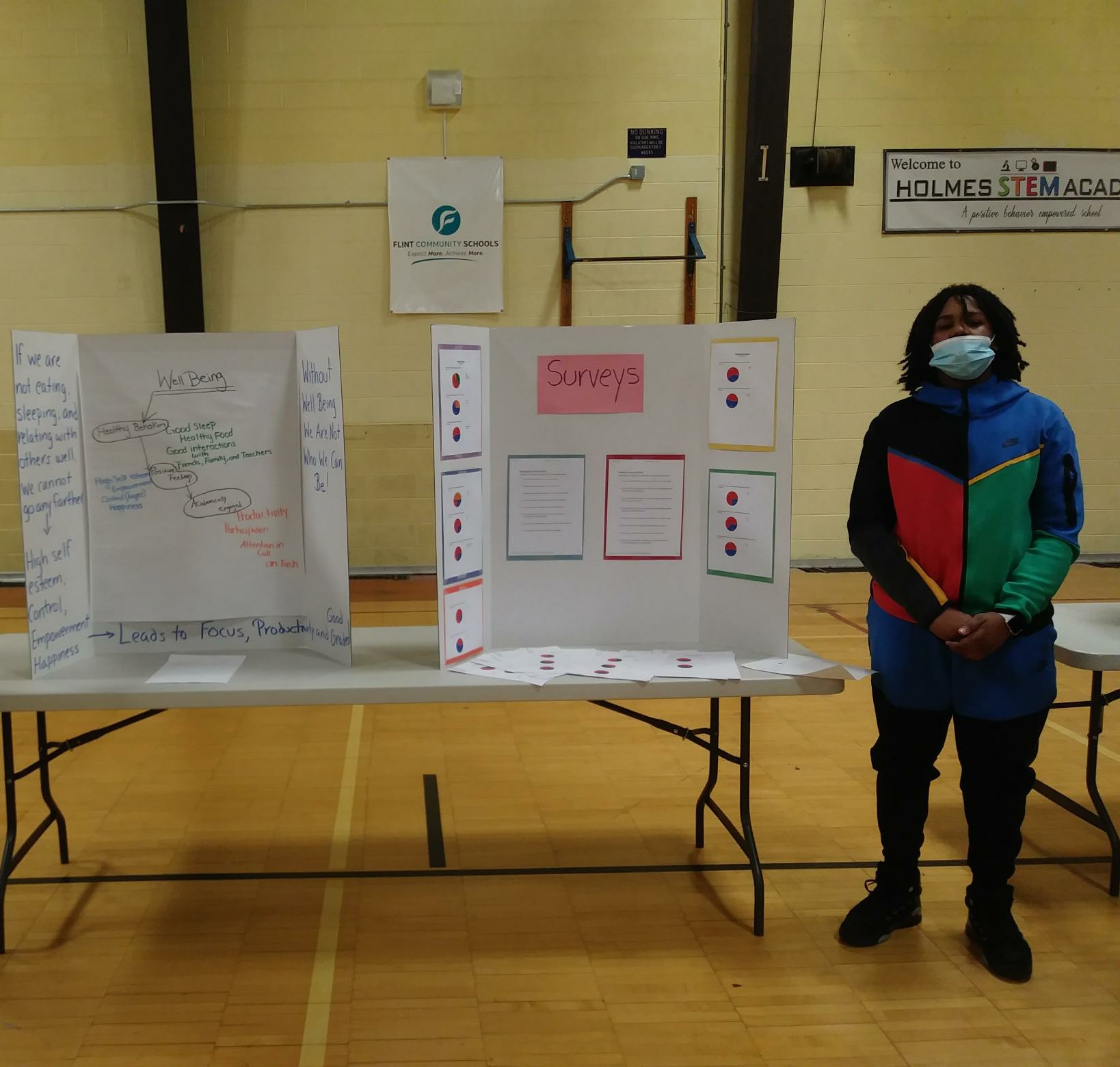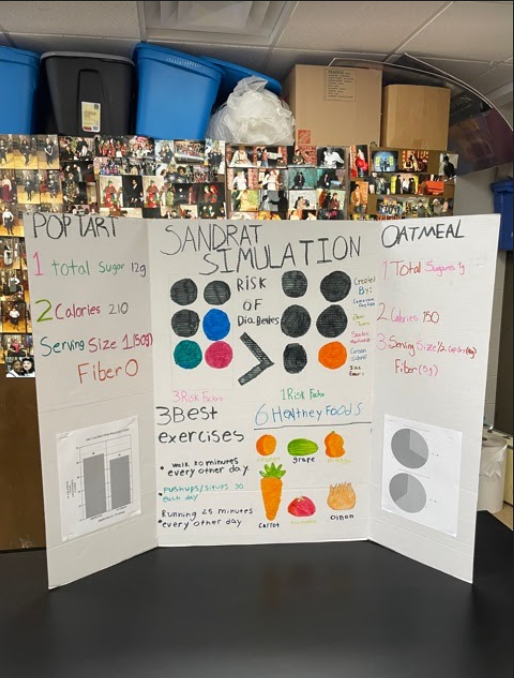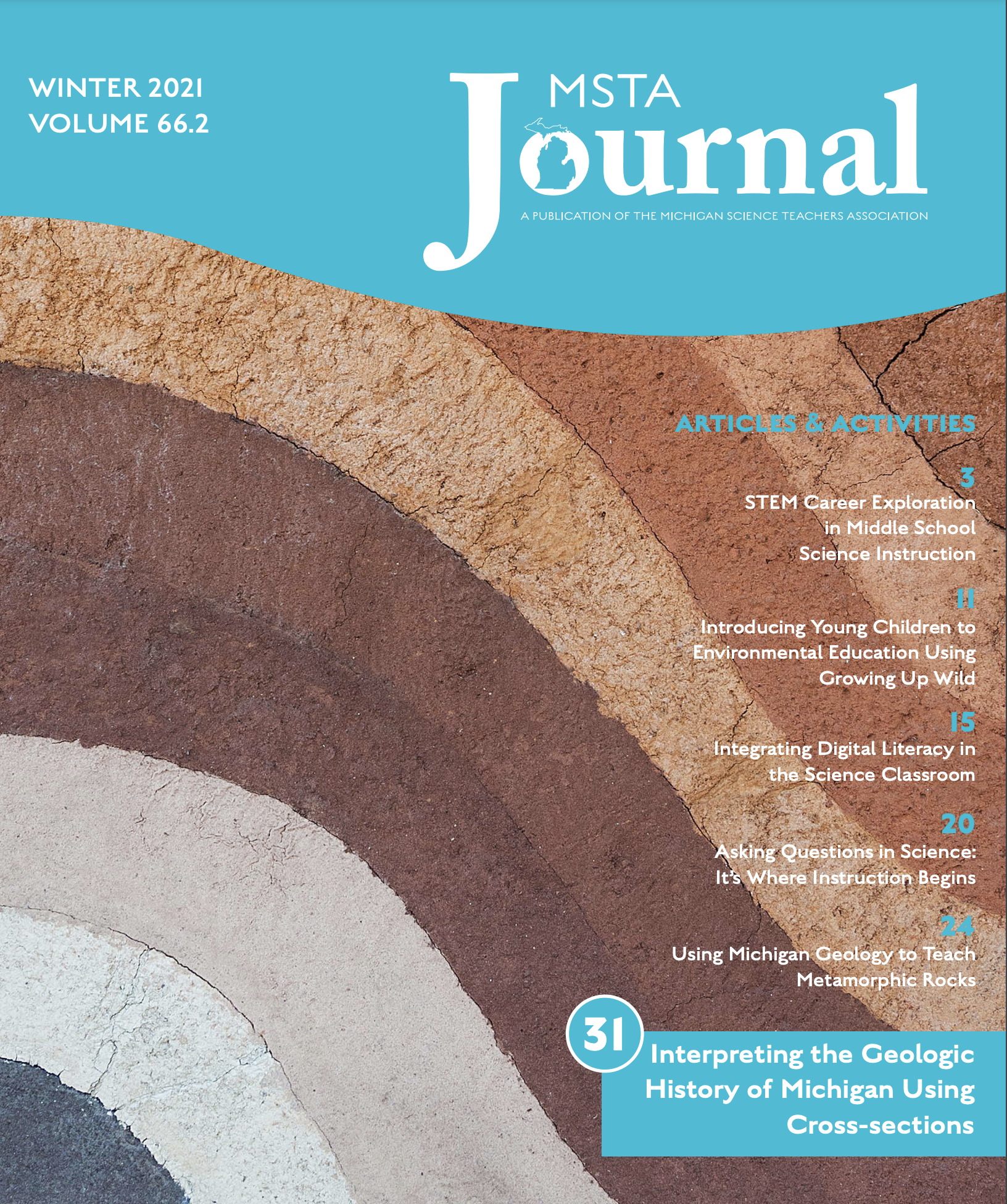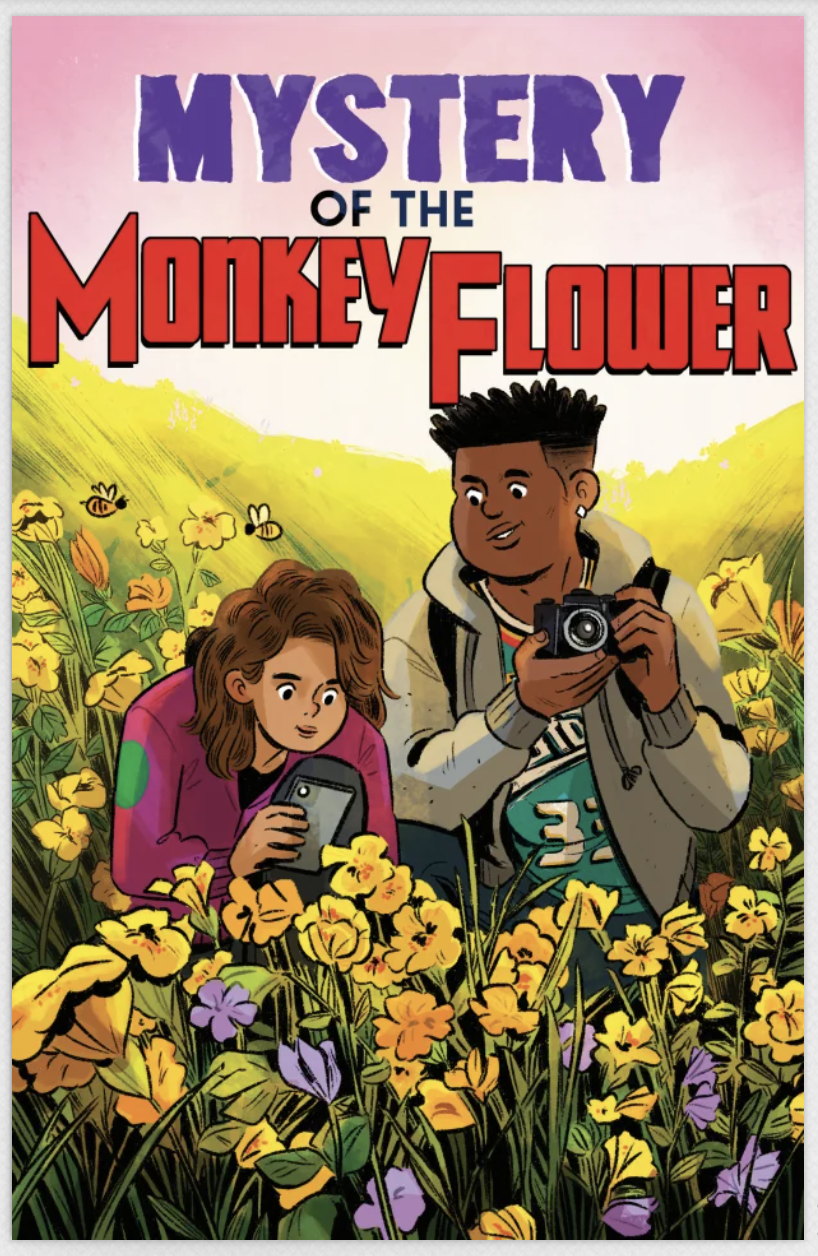News
Flint Jaguars focus on their well being while using technology

Eighth grade students from Holmes STEM Academy in the Flint Community School District presented their Community Action Research Projects to their peers and school officials on Wednesday, February 16, 2022. This fall, while studying the Health in Our Hands (HiOH) Curriculum: “How can looking for thrills make me miserable”? the students became very interested in phone use, gaming (video) and technology use.
In their presentations, students developed their own model and definition of Well-Being and how it affects healthy behaviors, such as good sleep, healthy food, good interactions with friends, family and teachers. Positive feelings of high self esteem, empowerment, anger control and happiness are all affected by our well-being. The students also shared that well-being affects how academically engaged they are by their productivity, participation and their attention in class.
Students research question was, “How does the use of technology affect your well-being?” They surveyed their peers and family members and kept logs of their technology use. They concluded that technology use can have negative effects on their well-being.
“Technology is affecting my sleeping cause if I get sleep while I’m on the phone I start to fall asleep but soon as I hear my phone go off I’m wide awake and I do not end up going to sleep.”
“My problem is when I’m watching a tv show I stay up all night to finish it”
Next students answered: How am I going to change my usage of technology to better my well-being? Students committed to making changes in the way they use technology to maximize well-being such as scheduling their sleep time, limiting their access to their phones by turning them to “do not disturb” or giving them to a parent, and paying better attention to their food and exercise choices:
“When I know I’m sleepy, I will put my phone on do not disturb so I can’t hear my phone go off and I will go to sleep. I get sleepy around 10pm but go to sleep around 2am because I’m on the phone.”
“I am going to set a time for me to go to sleep and give my phone to my mom so I can sleep better”
Atherton Wolverines are curious about Real vs Fake Foods

Seventh grade students from Atherton Jr/Sr High School in the Atherton Community School District presented their Community Action Research Projects to their peers and school officials on Monday, February 7th, 2022. This fall, the students became very interested in hidden sugar, food labels, processed and unprocessed foods, “real” vs “fake” food and portion size while studying the project-based curriculum, “Health in Our Hands (HiOH): What Controls Our Health?.” The students learned about diabetes, genetics and nutrition in their science class. At the end of the unit, students conducted a research project to help reduce or present diabetes in their community. Their research question was, How does raising students’ awareness of real (unprocessed or homemade) vs fake (processed or prepared) foods affect their food choices?
In their presentations, students learned from their interviews with family members that family members know the difference between real and fake foods but they choose the processed foods because it is easier to buy fast food and to prepare store-bought foods than make meals from scratch. Cost also plays a role. Family members shared that they would eat real food if they had the time and money to purchase it. Students learned that family members ate fake food when younger. But knowing what they know now, they will try and make better choices.
Students also met HiOH Flint Genesee Partner, Alaina Larrea. She is the Assistant Project Manager for Commit 2 Fit, program of the Greater Flint Health Coalition. Students learned about her career as a Nutritionist, Alaina provided expertise in reading food labels and learned about her career educating people about how food choices affect their body.
Students reflected on what they learned about health:
“Most of the things I normally eat are quite unhealthy and if I continue to eat them I could become at risk for diabetes.” -
Atherton 7th grader
““...ultimately I control my health by the choices I make with food and exercise.” - Atherton 7th grader
Health in Our Hands Inspires STEM Careers Awareness

A new journal article published by Michigan Science Teachers Association (MSTA) shows how Health in Our Hands (HiOH) inspires interest in STEM careers for underrepresented middle school students both in and out of school. Studies show that students are losing interest in STEM careers. Recommendations suggest that we must do a better job of supporting students' interests from a young age through awareness and encouragement.
The article provides an example of how career exploration is embedded in “What Controls My Health”, an NGSS-aligned middle school unit about diabetes. Through investigations and discussions, students are introduced to different careers in health and science which help increase student awareness, build interest in STEM careers, and introduce role models and mentors for students. The article gives tips to science teachers about how they can promote STEM careers in their instruction that supports students in building their STEM identity and connects activities to the home and community.
For more information about HiOH, visit https://hioh.education/.
A Tale of Two Flowers: new science-based comic book LIVE and in color

The Health in Our Hands (HiOH) Team, in partnership with Dr. David Lowry and the Lowry Lab, is excited to introduce the Mystery of the Monkeyflower Graphic Novel LIVE and in Color. This graphic novel is part of the new curriculum, Mystery of the Monkeyflower, a 6-week, Next Generation Science Standards-aligned, project based learning unit for high school life science. Students use a moneyflower plant experiment and a graphic novel to learn how traits evolve over time through natural selection at both macroscopic and microscopic levels. The experiment is based on the research of Dr. David Lowry, a plant biologist of different traits in the population of one species of monkey flowers (Mimulus).
The graphic novel story is written by Danny Jackson and Idit Adler and the art is created by Louie Chin. The editors are David B. Lowry, Acer VanWallendael, Bianca Alexander, Consuelo Morales, and Irene Bayer. It was developed with input from teachers and community partners in Flint and Genesee County and piloted in classrooms in Flint Community Schools. The work was supported financially by Michigan State University and grants from the National Science Foundation (IOS-1855927) and Science Education Partnership Award (SEPA) National Institute of General Medical Sciences, a component of the NIH.
To see the graphic novel in action, visit https://hioh.education/monkeyflowers-graphic-novel. For more information about the curriculum and professional learning opportunities, visit https://hioh.education/.
Teachers become Plant Researchers as They Prepare to Teach the “Mystery of the Monkeyflower”

Starting in February, high school teachers from Atherton and Flint will teach a new Health in Our Hands (HiOH) unit for biology called the “Mystery of the Monkeyflower.” Four teachers and a curriculum specialist took part in 3 sessions of professional learning facilitated by the HiOH Team led by Dr. Consuelo Morales and Dr. Hildah Makori, HiOH Research Associates. Professional learning included several “sample teach” experiences where teachers took part in key curricular activities as learners, including introduction to the phenomenon and creating a driving question flowchart, conducting a field research investigation, and simulating genetic mechanisms at the cellular level. Each sample teach was followed by a debrief where teachers shared insights as a learner and reflected as teachers on instructional practices. Two sessions were held at the Genesee Intermediate School District and one was held virtually due to a winter storm.
In the “Mystery of the Monkeyflower”, students use a monkeyflower plant experiment and a specially developed graphic novel to learn how traits evolve over time through natural selection at both macroscopic and microscopic levels. The experiment is based on the research of Dr. David Lowry, plant biologist at Michigan State University, who is studying how different environments affect the development of different traits in the population of one species of monkeyflowers (Mimulus). The graphic novel was developed in collaboration with Dr. Lowry’s research team. Monkeyflowers, which grow quickly, produce many seeds, and have a simple genome, are the subject of study of many researchers who study plant evolution and adaptations. Monkeyflowers have adapted to have many colors and forms, diverse lifestyles, and extraordinary hardiness.
In early January, Dr. Lowry and the HiOH Team visited the classrooms and planted monkeyflowers from seed. Teachers report that students are enjoying taking care of the plants and watching them grow. They should be ready for students to use in their investigations when the curriculum starts in February.
Renee Bayer, HiOH team member, stands in front of the Monkeyflower seedlings in Atherton classroom.


